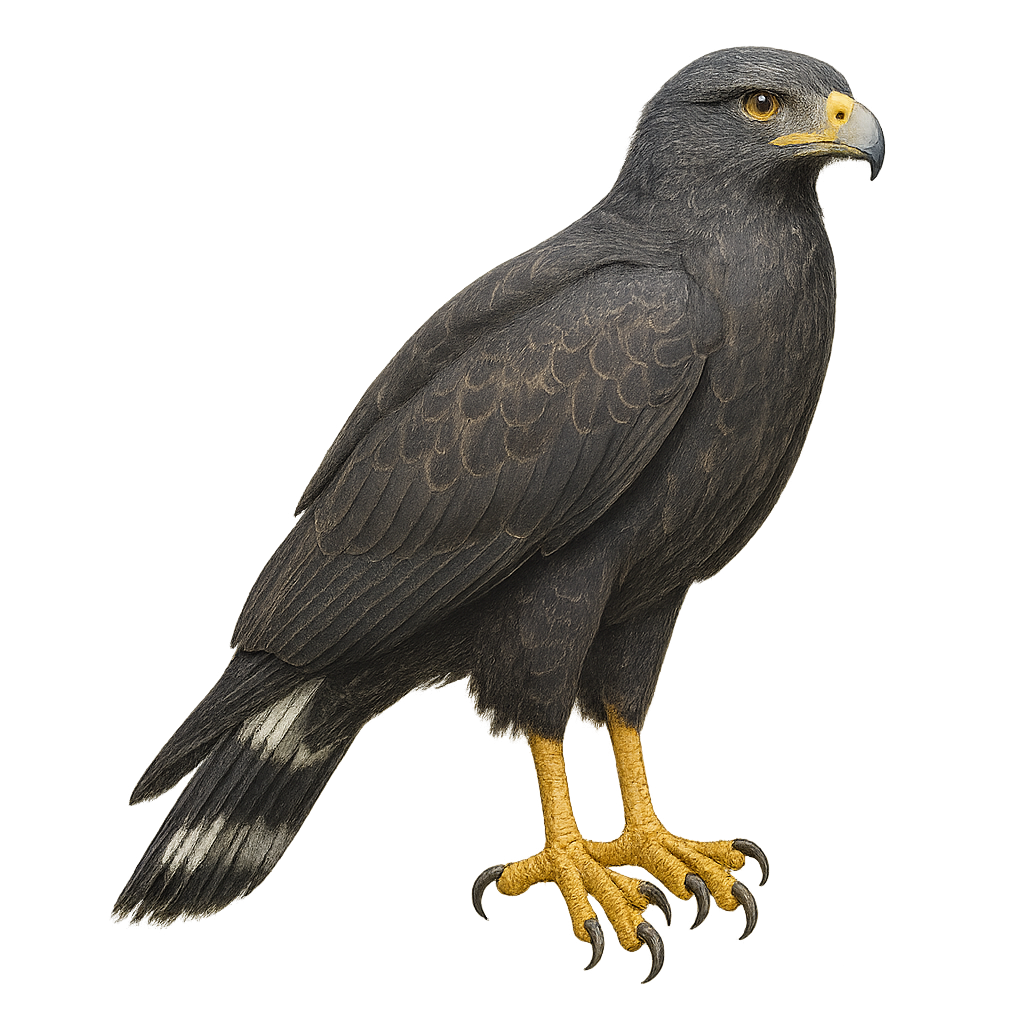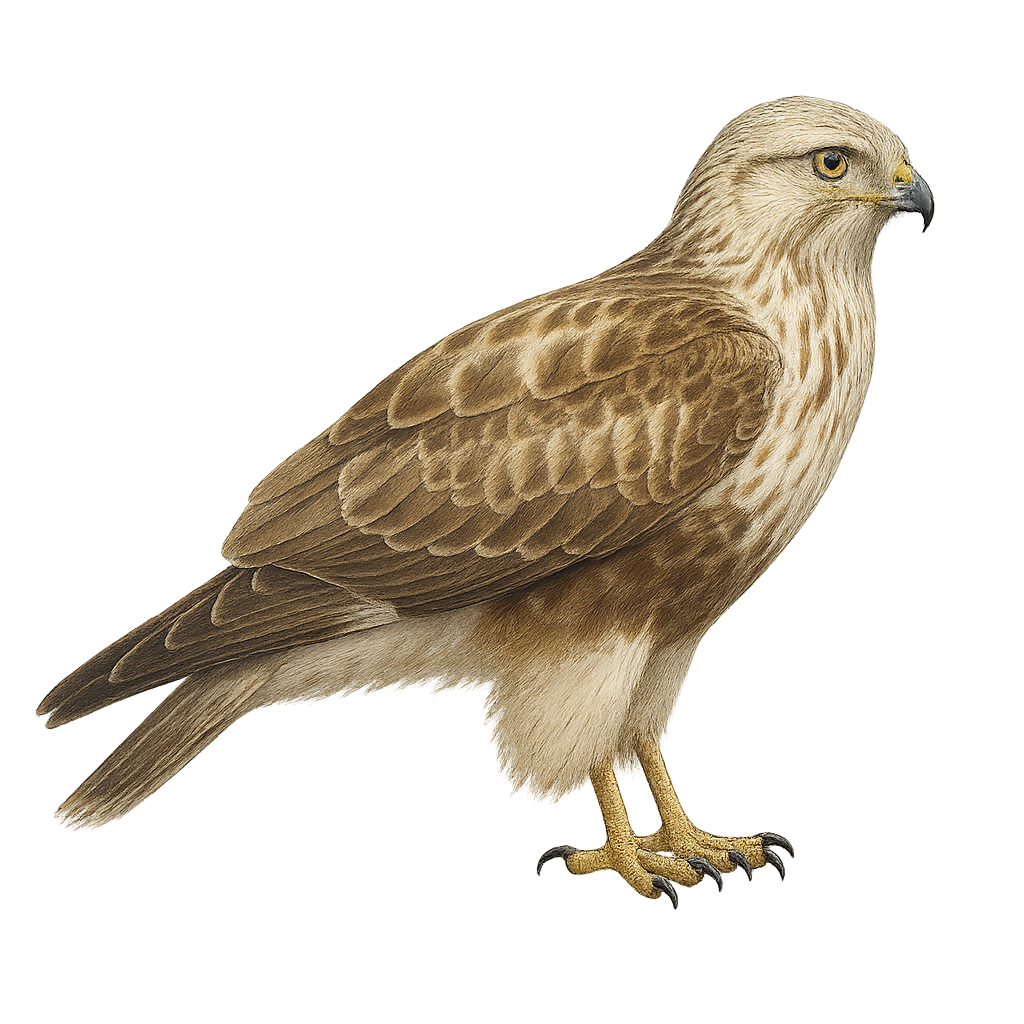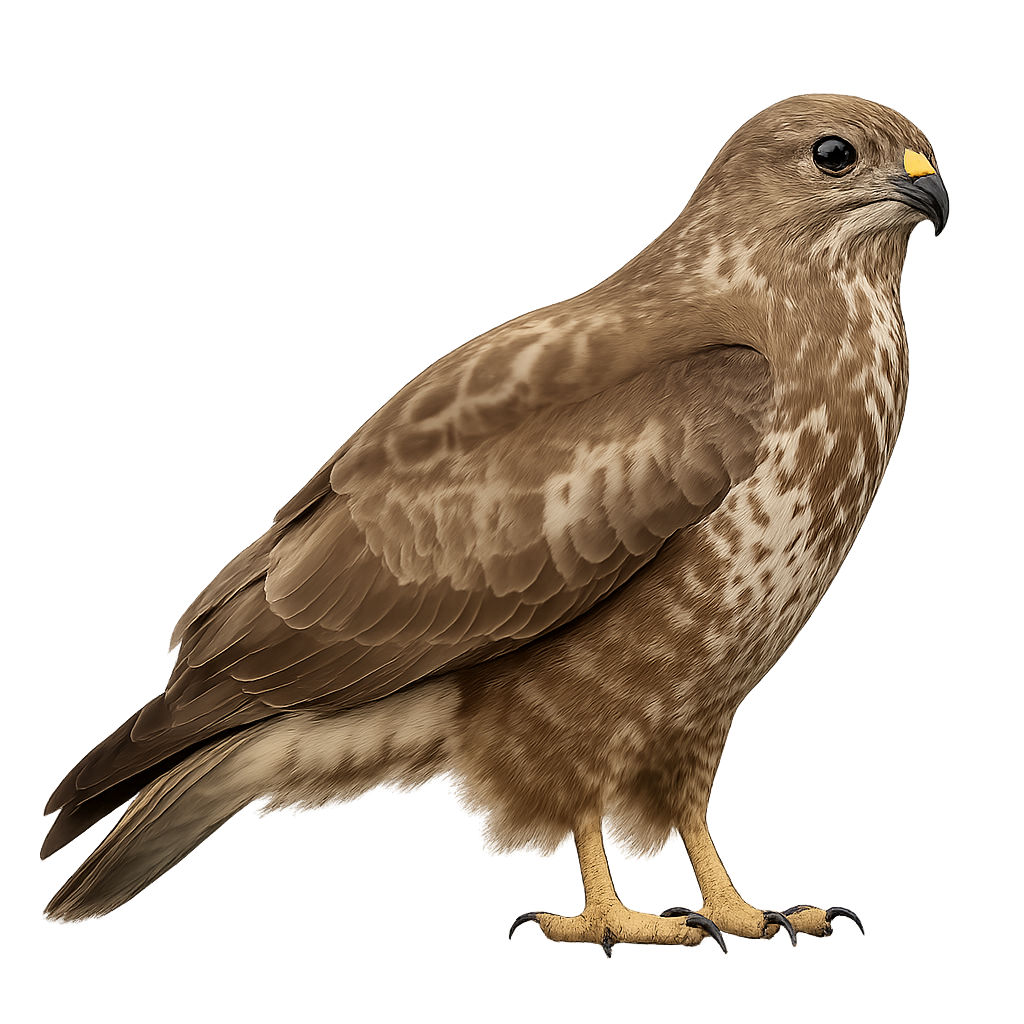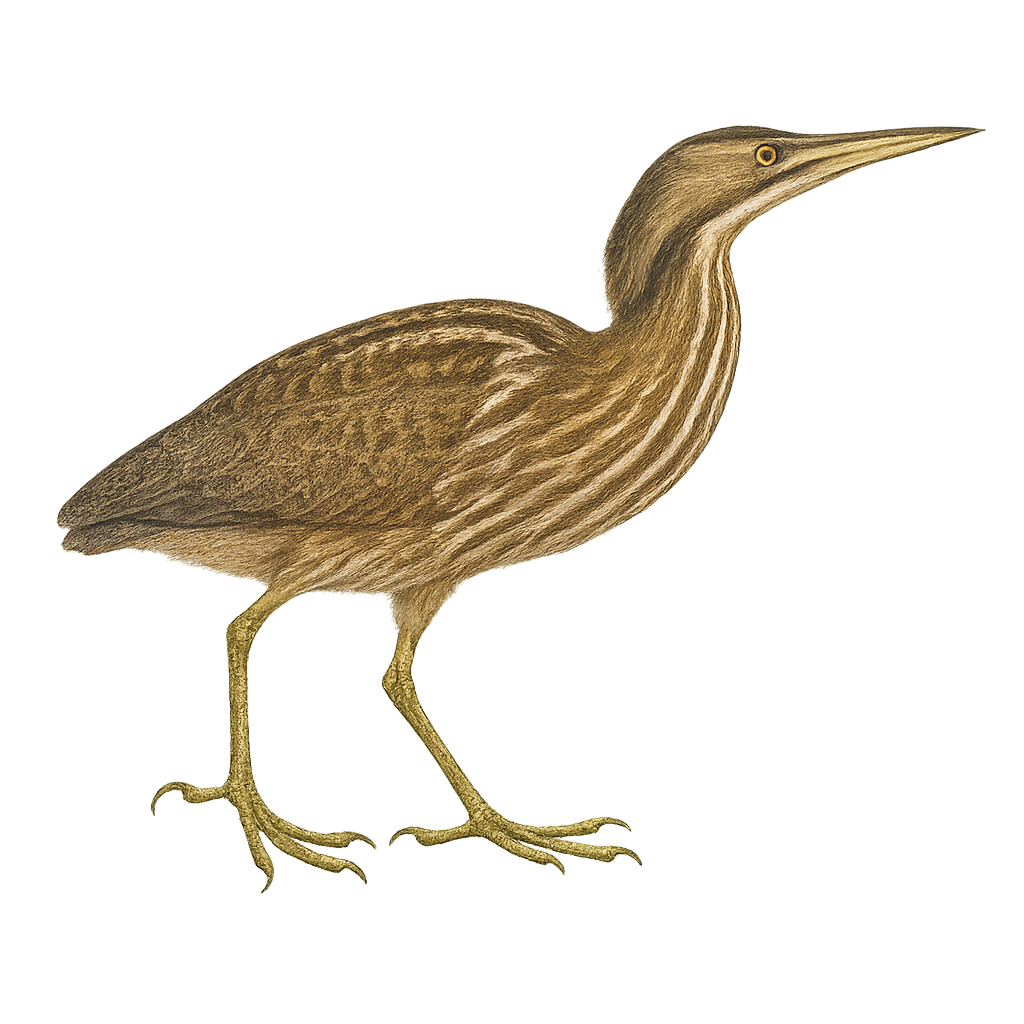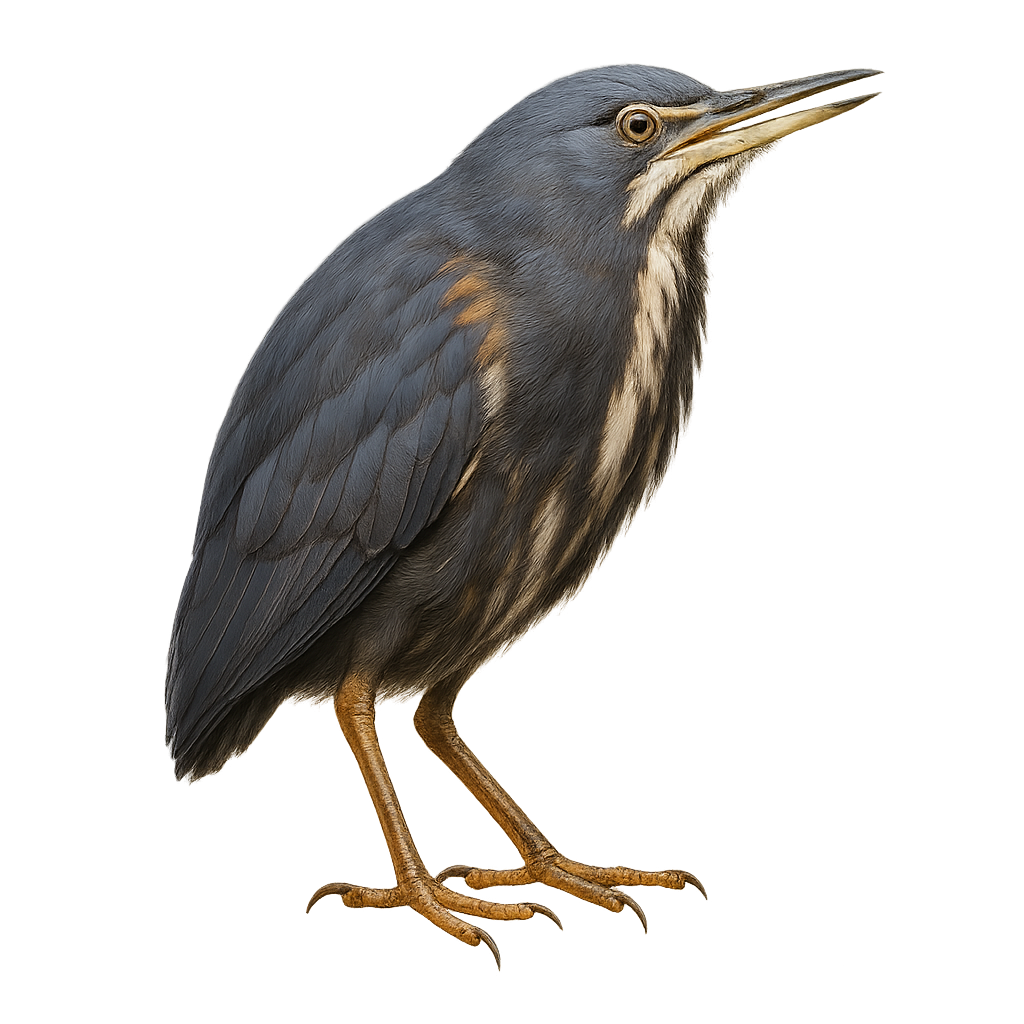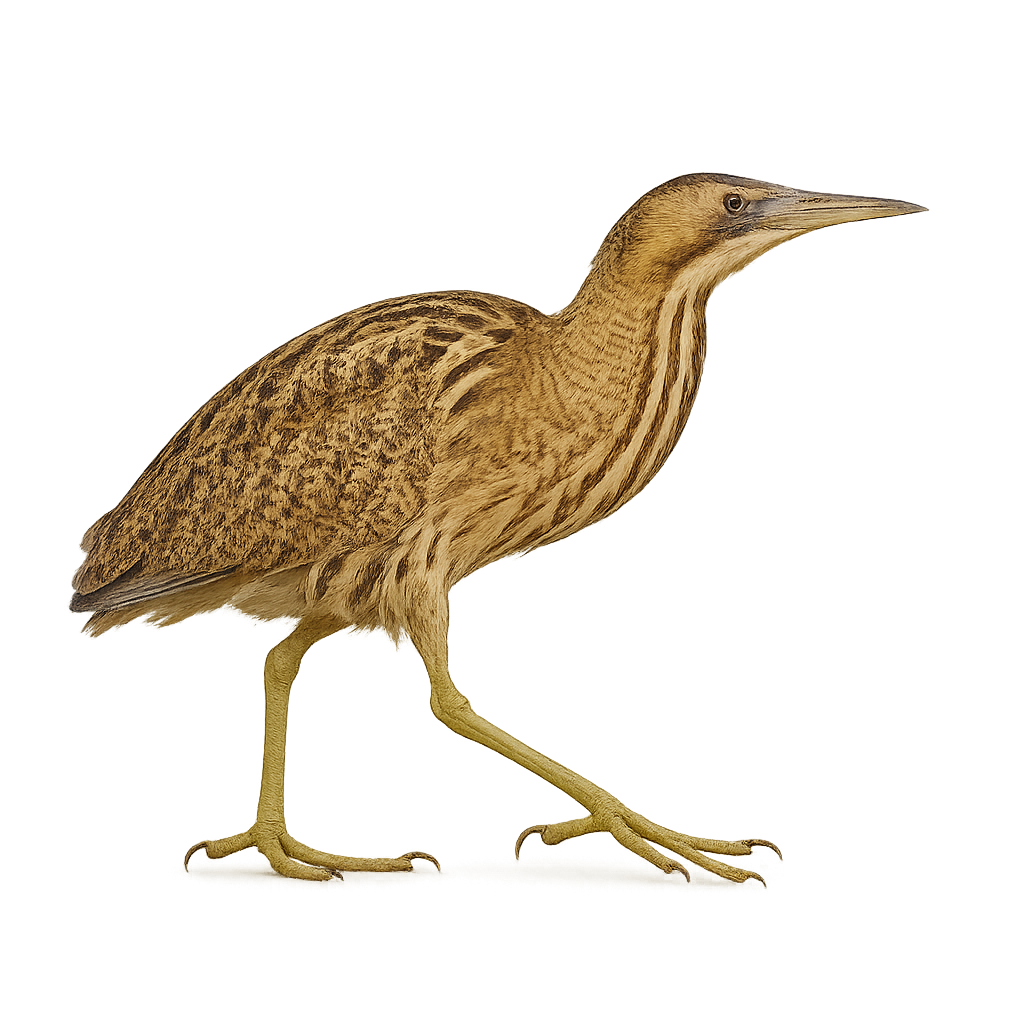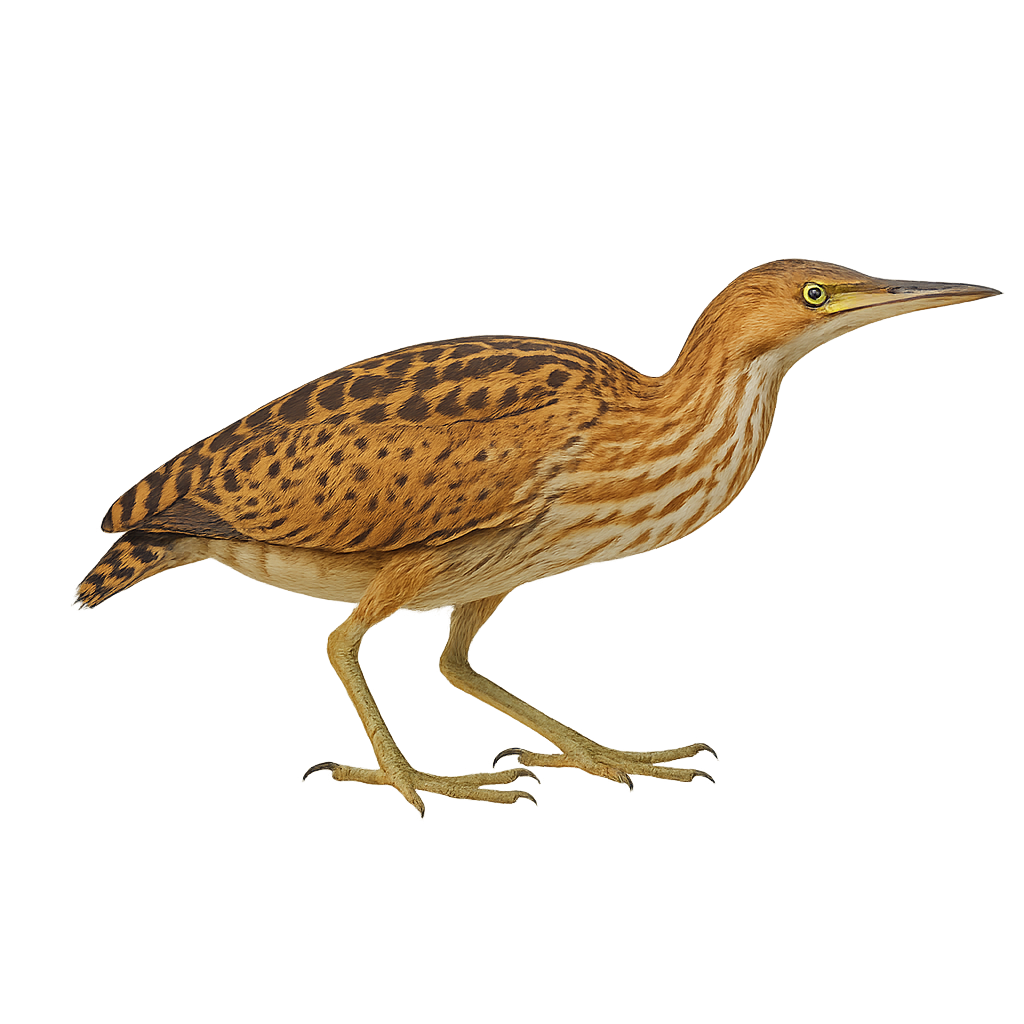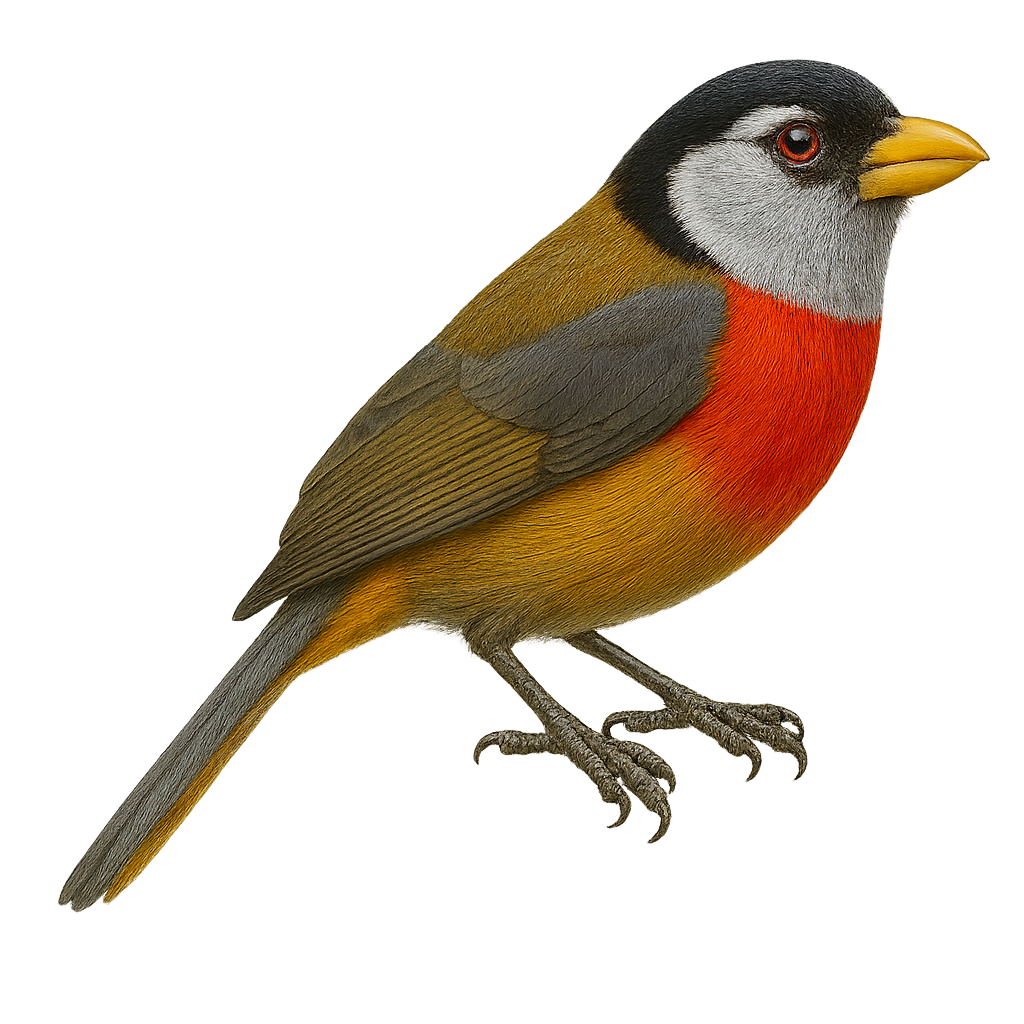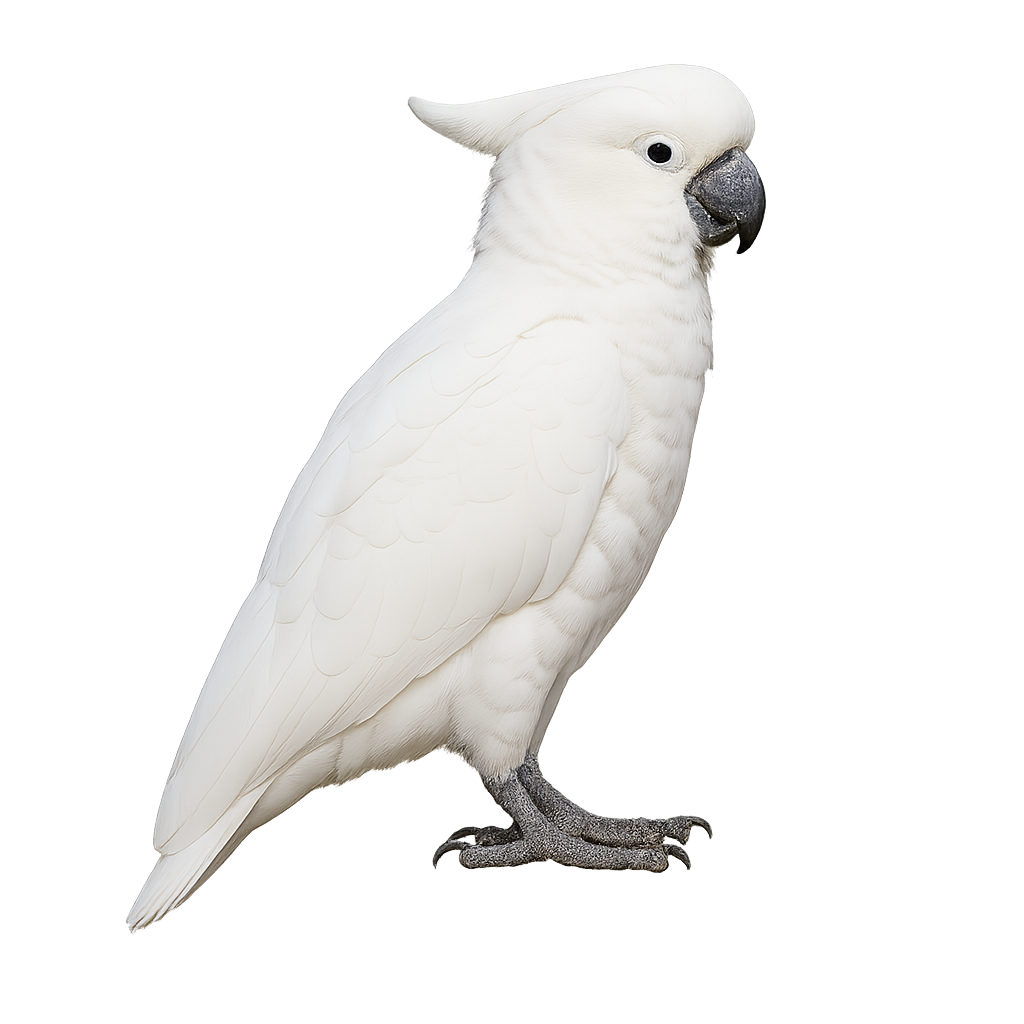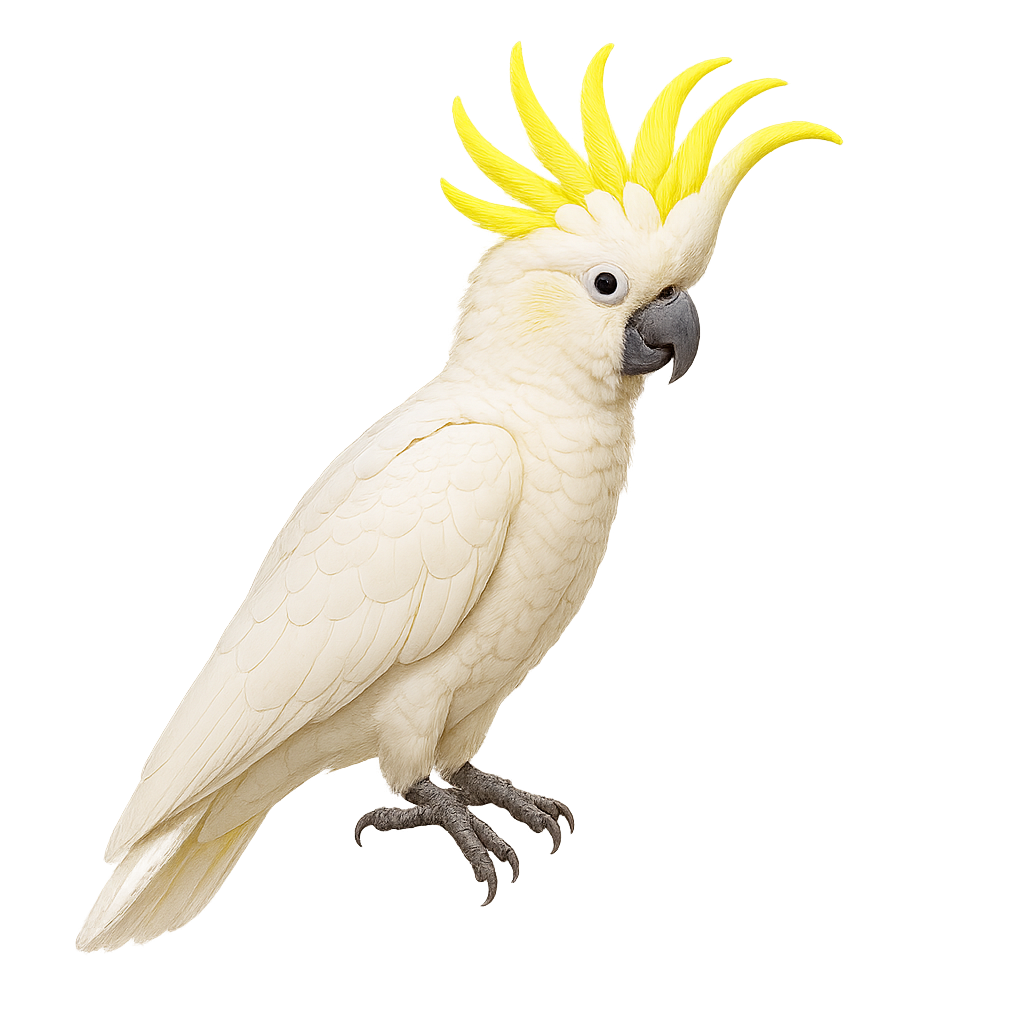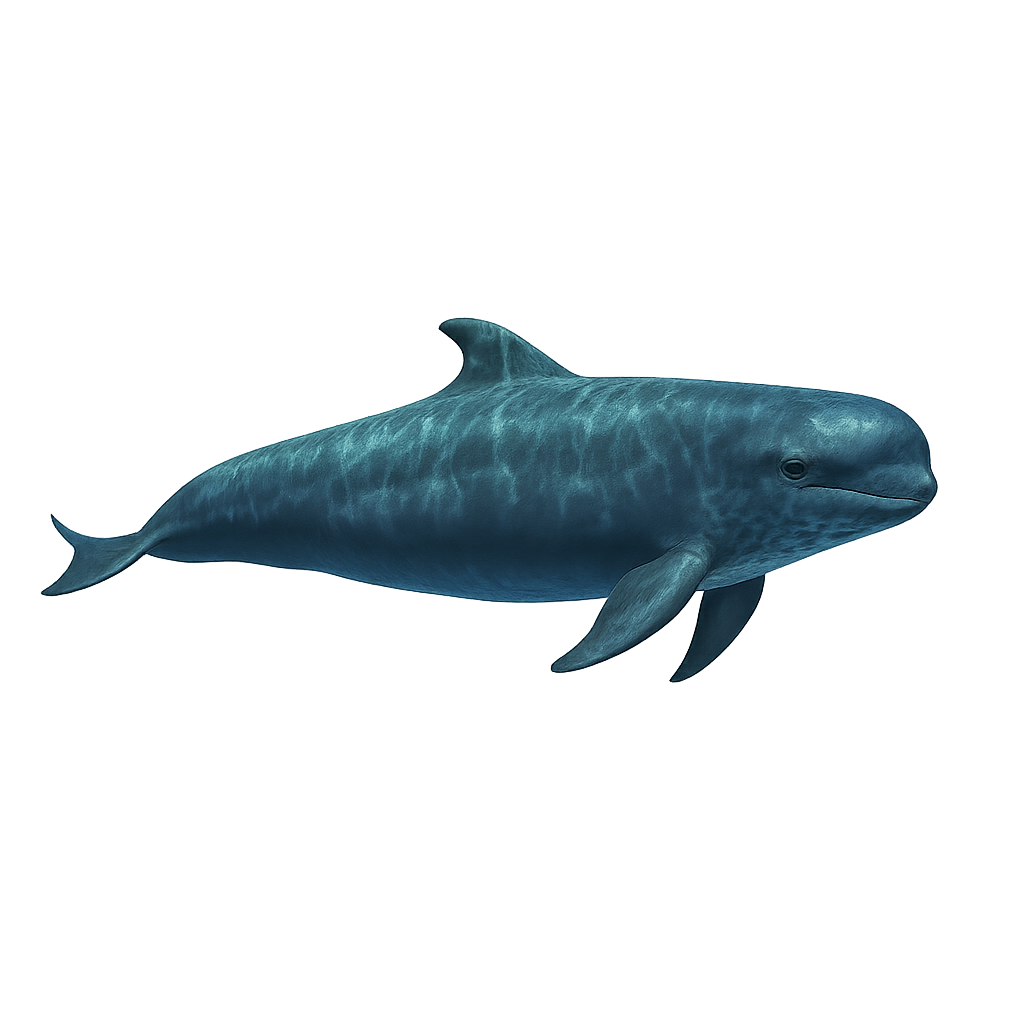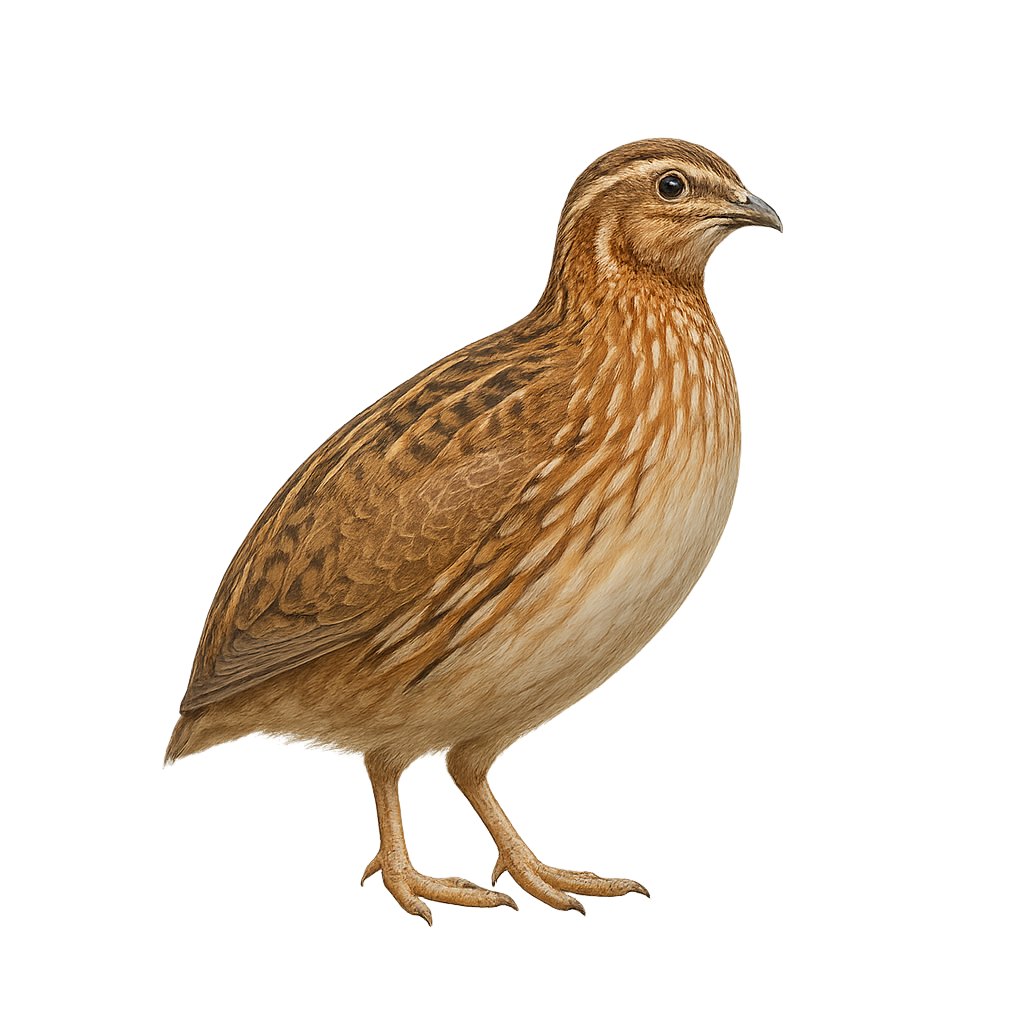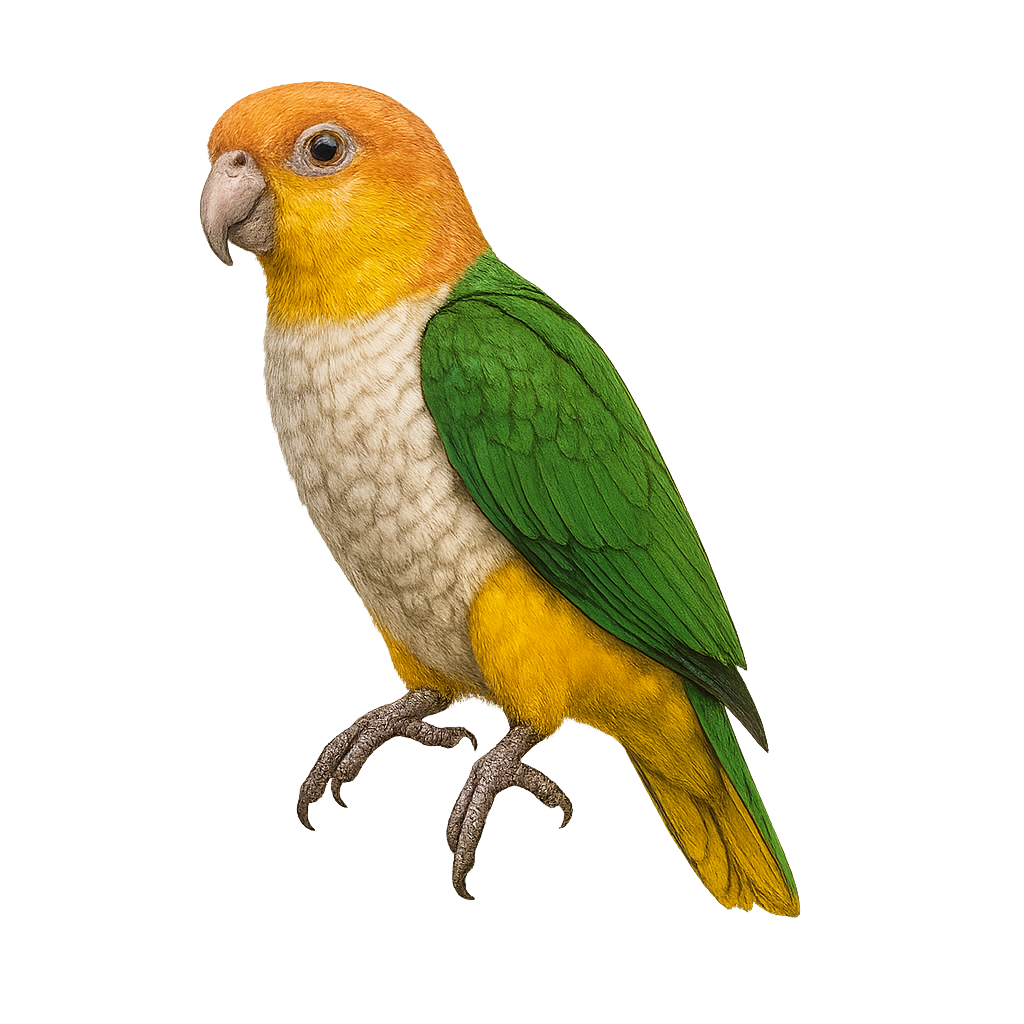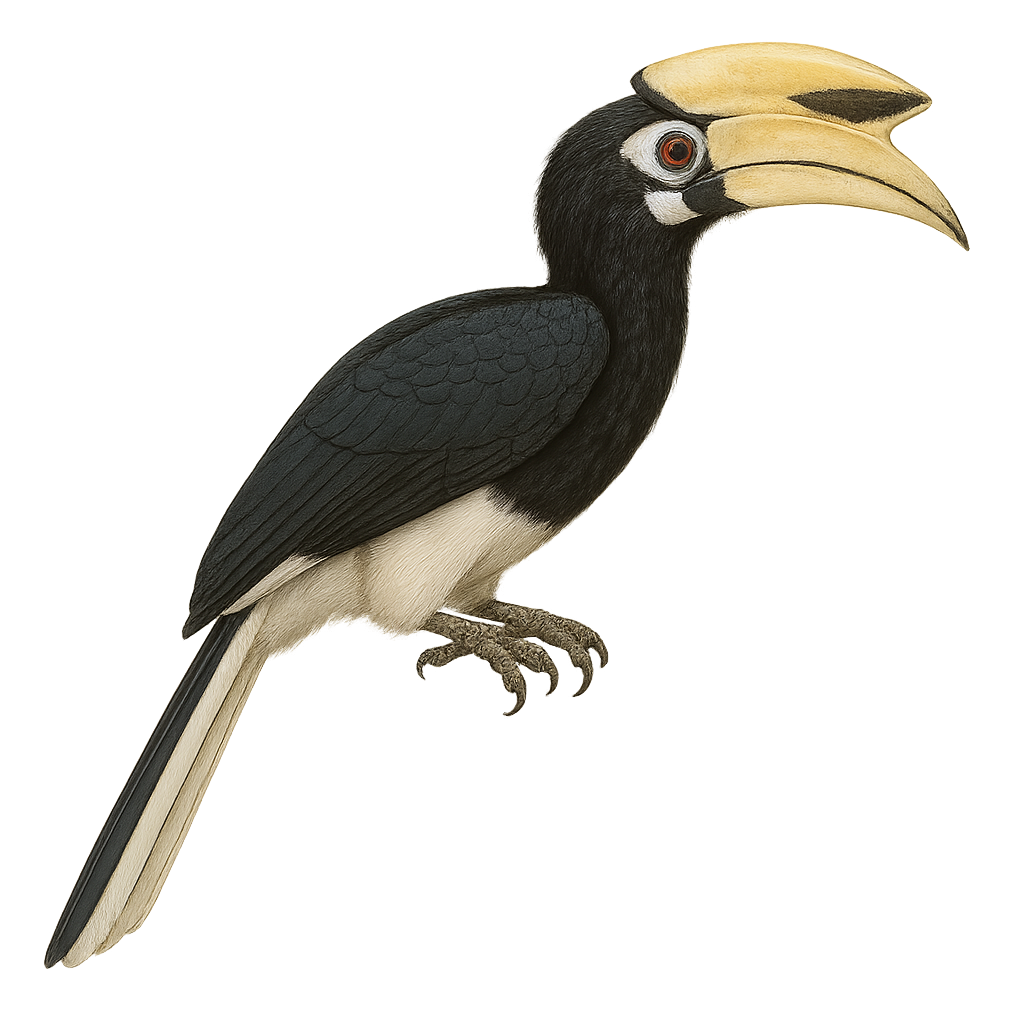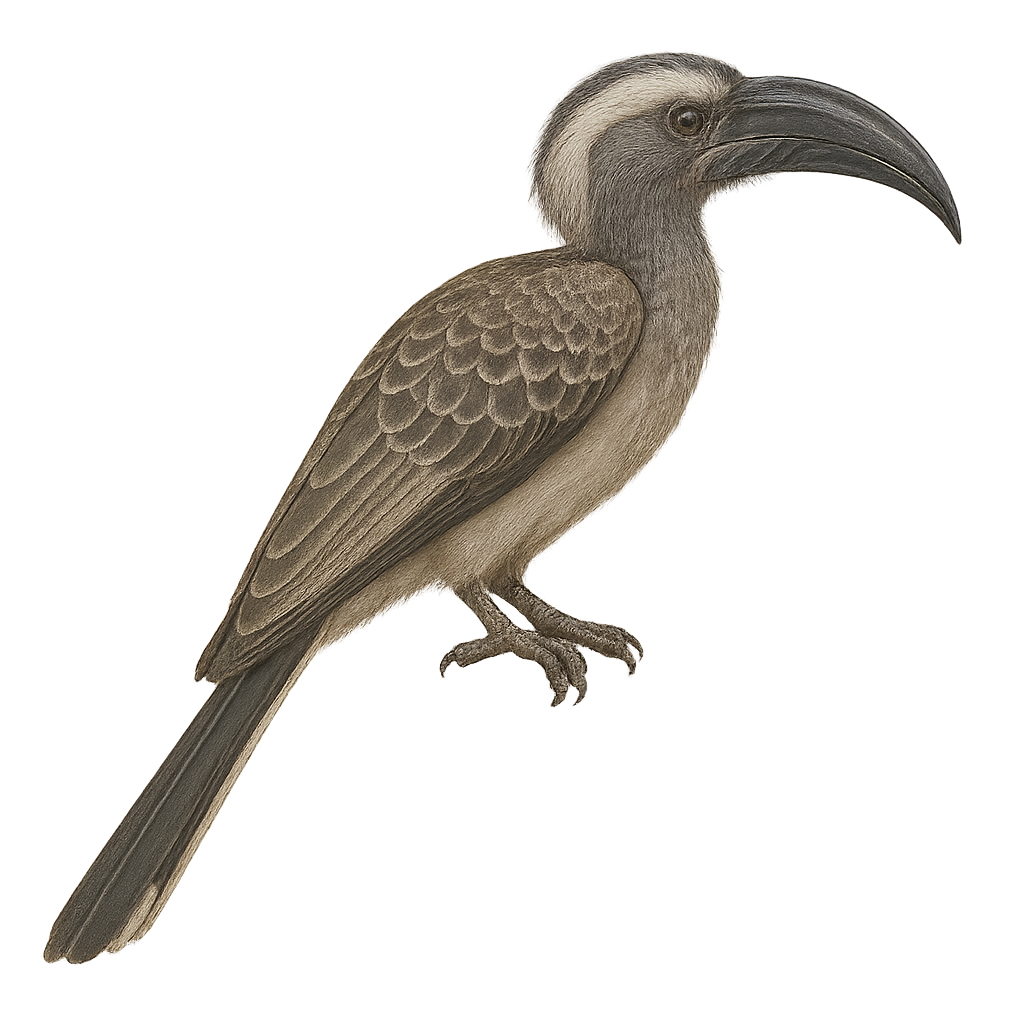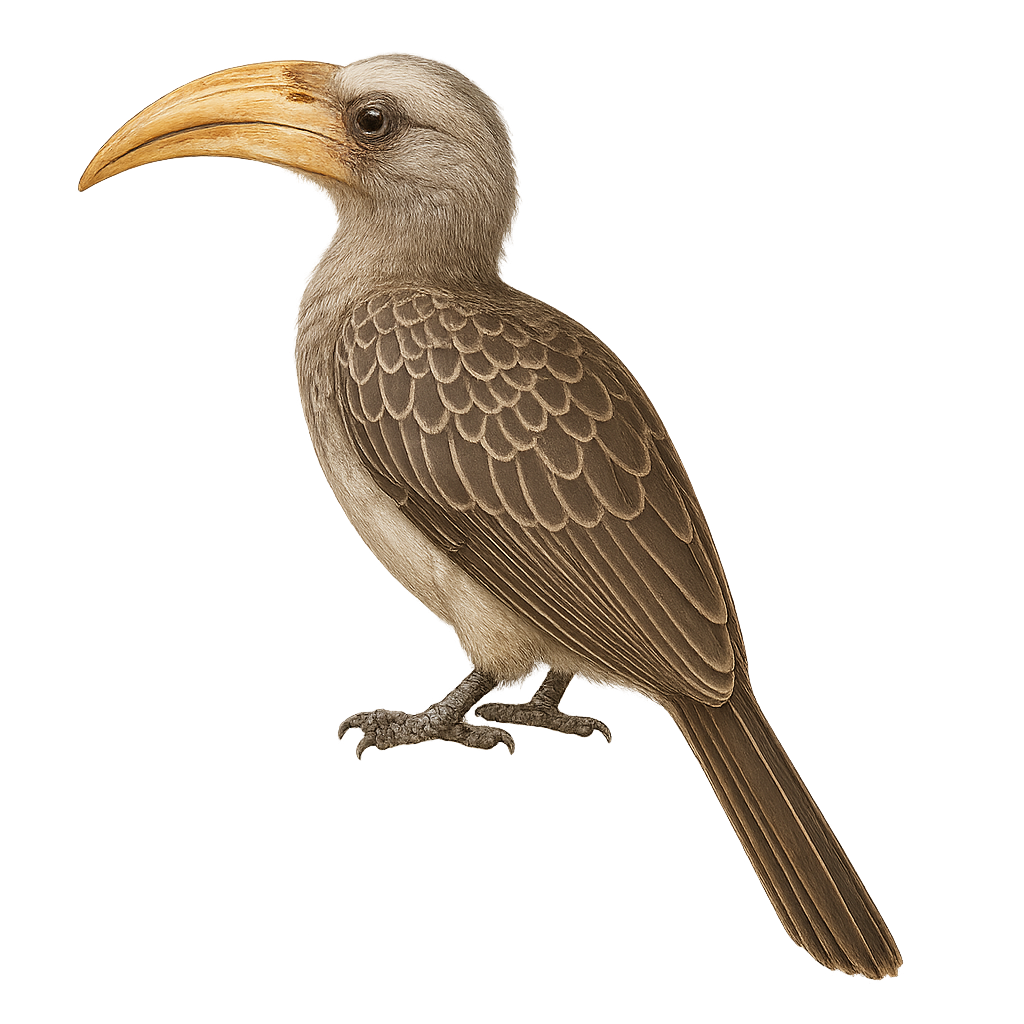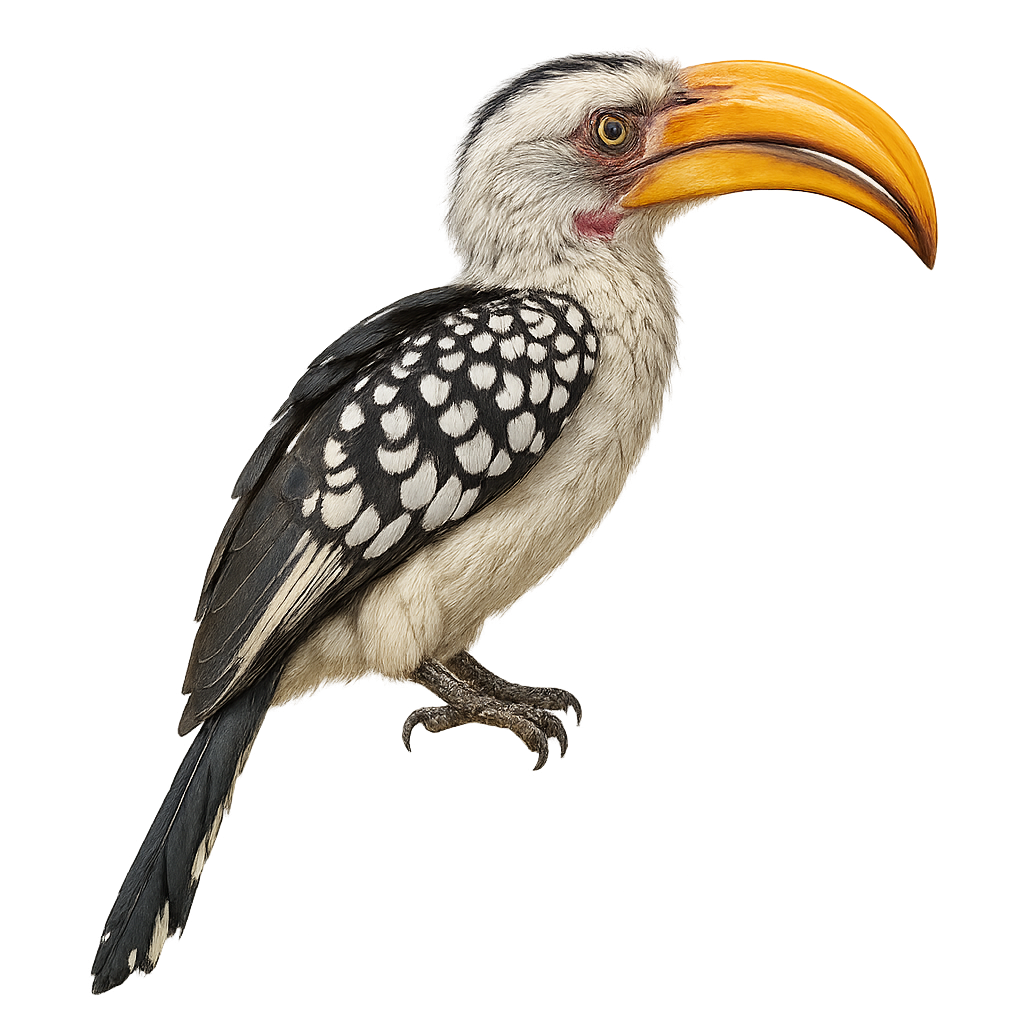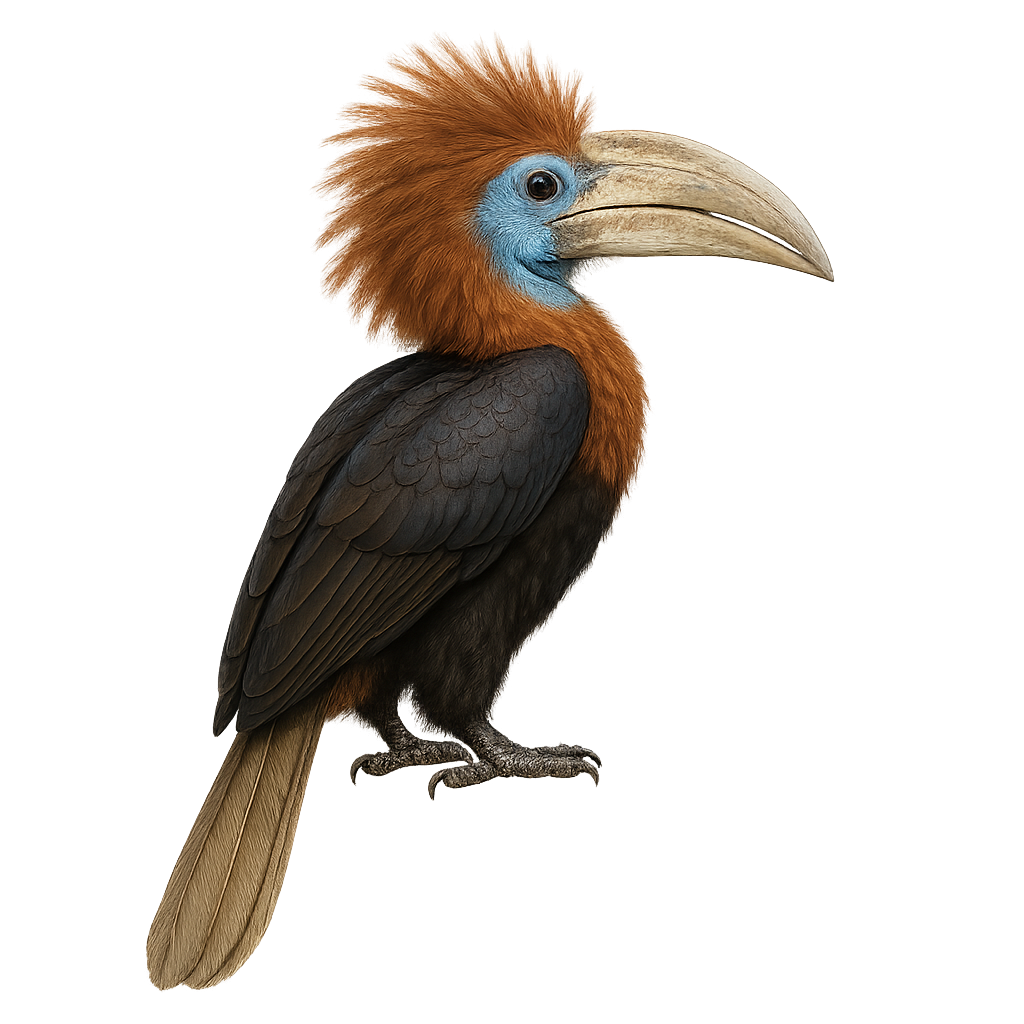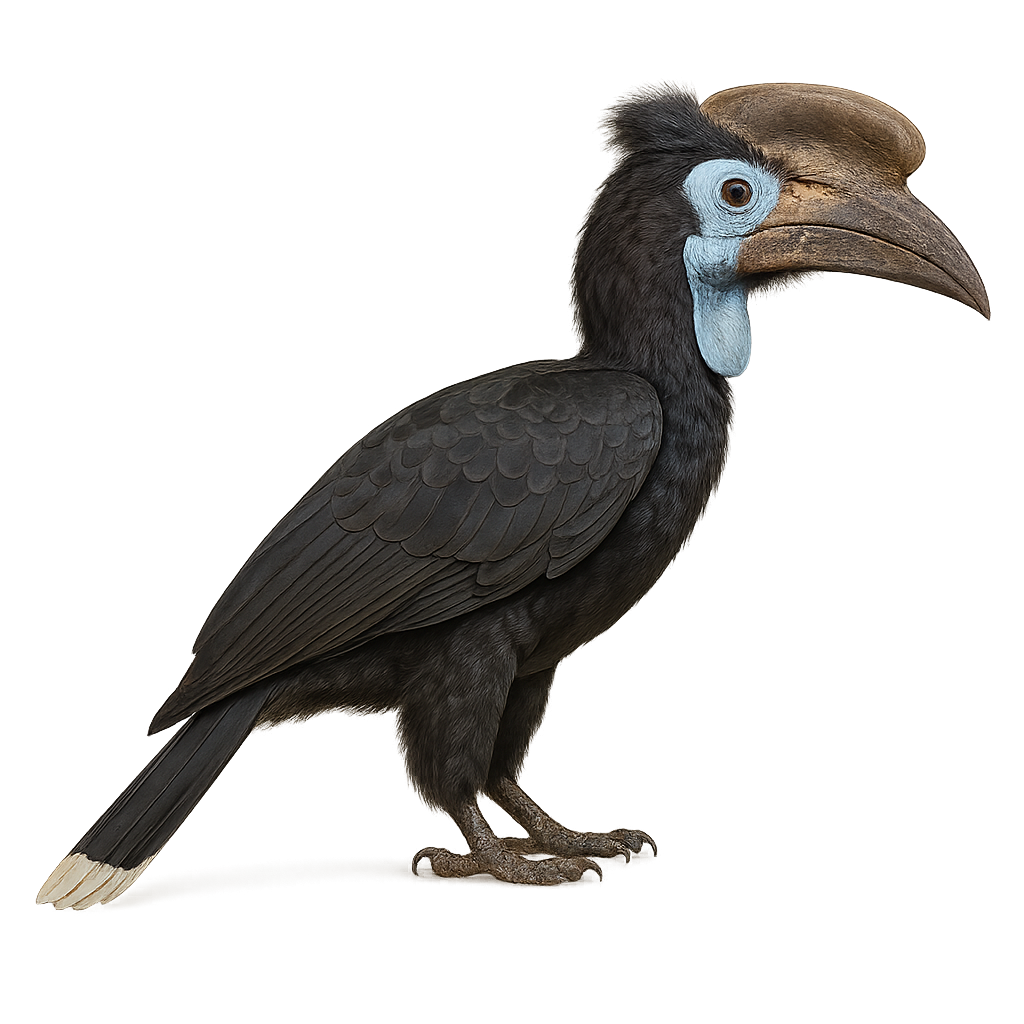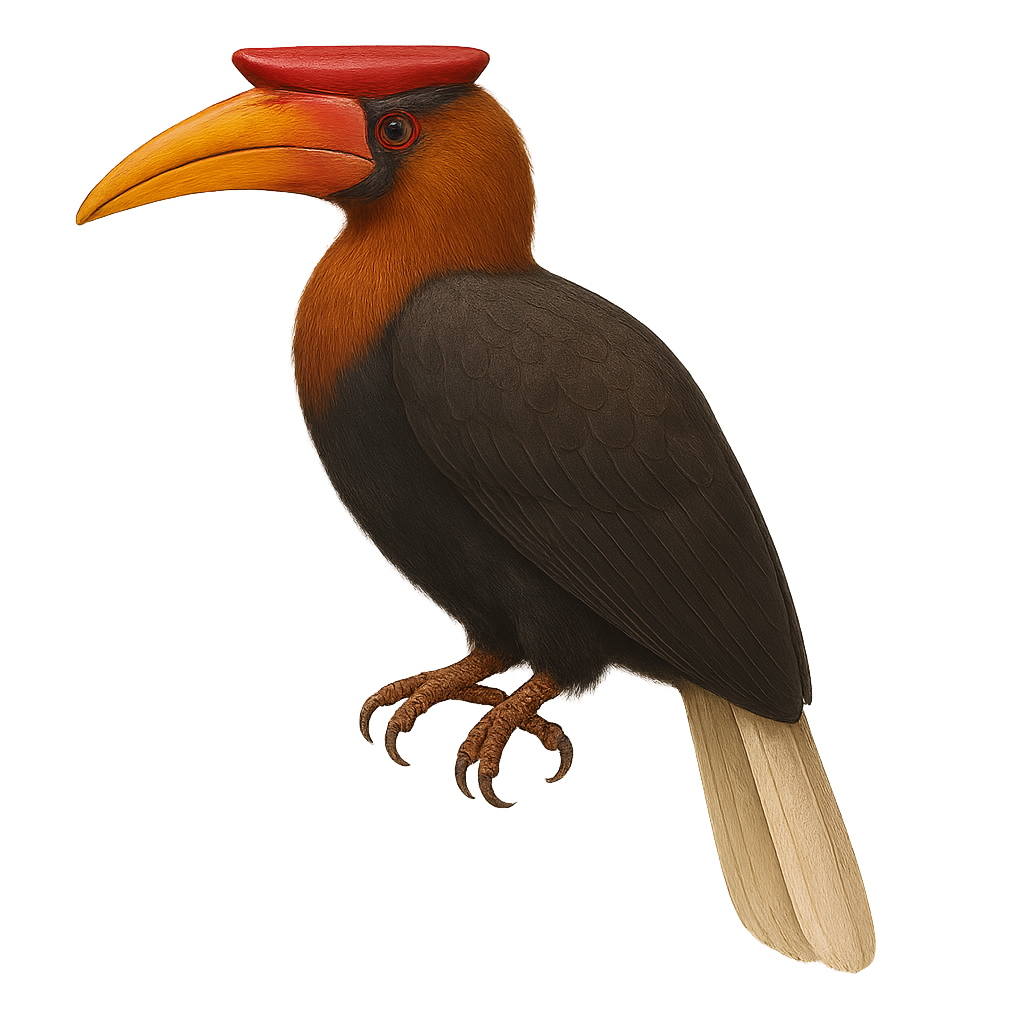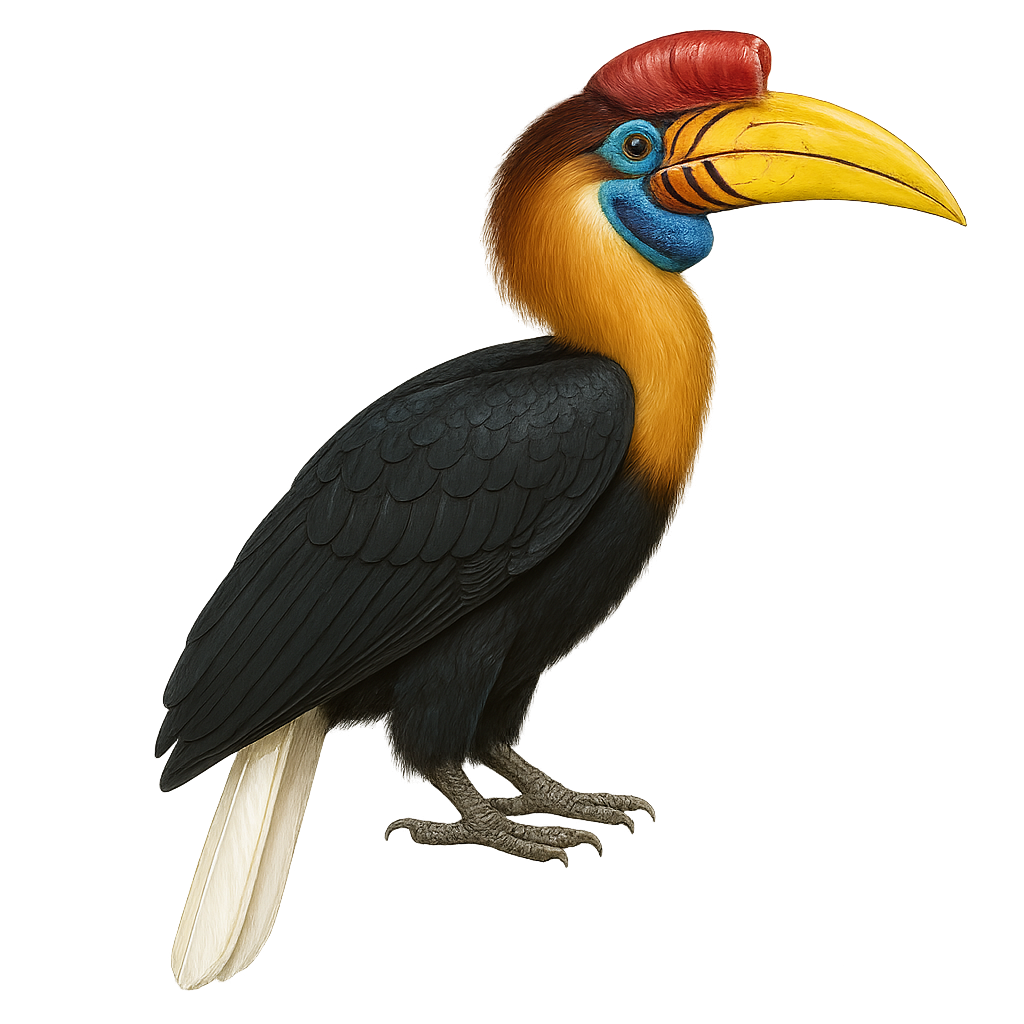The Common Black Hawk, scientifically known as Buteogallus anthracinus, is a medium-sized raptor found primarily in coastal regions and riparian forests of Central America and the southern United States. Its plumage is predominantly black with bluish sheen, and it features a distinctive white band on its tail. This bird of prey is often seen soaring above waterways, hunting for prey such as fish, crabs, and small vertebrates. Its call is a sharp, piercing whistle. The Common Black Hawk is territorial, often solitary or in pairs, and builds its nest in trees, usually near water.
The Rough-legged Buzzard, or Buteo lagopus, is a medium-sized bird of prey known for its feathered legs, which help it endure cold climates. It features a brown plumage speckled with white, with a white tail barred with black. This raptor is often seen hovering, scanning the ground for prey, mainly rodents. It breeds in arctic and subarctic regions but migrates southward in winter. The Rough-legged Buzzard is a solitary bird, although it can be seen in small groups during migration. It prefers open habitats such as tundras, grasslands, and agricultural areas.
The Common Buzzard is a medium-sized diurnal raptor, easily recognizable by its often spotted and banded brown and white plumage, which gives it a particularly variable appearance from one individual to another. It primarily inhabits open forests, hedgerows, and agricultural landscapes in Europe, Asia, and North Africa. The Common Buzzard feeds on small mammals, birds, and occasionally insects, which it hunts on the ground, often perched on a tree or pole, waiting for the right moment to swoop down on its prey.
This raptor is known for its characteristic flight, often soaring in the sky in wide circles. The Common Buzzard is also a migratory bird, leaving some of its breeding grounds in Europe to migrate to warmer regions during the winter. While the population of the Common Buzzard is stable in many areas, it can be affected by habitat loss and human persecution.
The American Bittern, Botaurus lentiginosus, is a medium-sized wading bird belonging to the Ardeidae family. It is primarily found in North America, inhabiting marshes and wetlands. Its brown plumage with darker streaks provides excellent camouflage among reeds. Known for its distinctive call, often likened to a water pump, the American Bittern feeds mainly on fish, insects, and small mammals. Although elusive, it can sometimes be seen standing still, adopting a vertical posture to blend into its surroundings.
The Sturm's Bittern, or Botaurus sturmii, is a rare and elusive bird belonging to the Ardeidae family. It is primarily found in the wetlands of Central and West Africa, where it skillfully camouflages itself among reeds and tall grasses. This medium-sized bittern has a streaked brown plumage that allows it to blend into its surroundings. It is most active at dusk and dawn, when it emits characteristic loud calls. Its population is difficult to estimate due to its secretive nature and often inaccessible habitat. Conservation of its natural habitats is crucial for its survival.
The Great Bittern is a large, secretive heron, easily recognized by its brown spotted and striped plumage, which allows it to blend perfectly into the reeds and vegetation of wetland areas where it lives. This nocturnal and solitary bird primarily inhabits marshes, ponds, and reed beds in Europe, Asia, and North Africa. It feeds mainly on fish, amphibians, and small birds, which it hunts by silently creeping through aquatic plants or standing still to wait for its prey.
The Great Bittern is an excellent master of camouflage, using its plumage to conceal itself in its environment, making it difficult to observe. Migratory, it leaves its breeding grounds to travel to Africa during the winter. While it is listed as "Near Threatened" on the IUCN Red List, it remains vulnerable to habitat loss due to wetland drainage and urbanization.
A nocturnal and secretive marsh heron, this bulky bird with cryptic buff-brown plumage hides among reeds to feed on insects, fish and small vertebrates from ambush. When moving, it crouches with neck erect and emits deep booms at dusk during the breeding season.
The Black-spotted Barbet, or Capito niger, is a bird from the Capitonidae family, primarily found in the humid tropical forests of South America. It is characterized by its glossy black plumage, accented with white spots on the wings and belly. This bird measures about 18 cm in length and has a sturdy beak, suited for its diet mainly consisting of fruits, insects, and small invertebrates. The Black-spotted Barbet is often seen in pairs or small groups, actively moving through the canopy in search of food. Although its habitat is threatened by deforestation, it is currently classified as Least Concern by the IUCN.
The Toucan Barbet, or Semnornis ramphastinus, is a colorful and fascinating bird found primarily in the humid forests of the Andes. It is distinguished by its vibrant plumage, mixing shades of red, blue, and yellow, and its robust, colorful beak. This bird measures about 20 cm in length and weighs between 80 and 100 grams. It typically lives in pairs or small family groups and feeds mainly on fruits, but also on insects and small vertebrates. The Toucan Barbet plays a crucial role in seed dispersal, thus contributing to forest regeneration. Although its habitat is threatened by deforestation, it is currently classified as "least concern" by the IUCN.
Cockatoos are exuberant and colorful birds, known for their spectacular crests and fascinating social behavior. These birds are native to Australia, New Guinea, and neighboring islands. Their plumage, often white with brightly colored accents on the crest or tail, makes them particularly attractive. They are also famous for their intelligence and ability to mimic sounds, including human speech, making them popular as pets.
Cockatoos live mainly in forests, savannas, and coastal areas. They are social birds that form often noisy groups, spending their days searching for food, perching, and interacting with other members of their group. Although some species of cockatoos are protected due to habitat loss and poaching, they remain an iconic symbol of exotic birds.
The Sulphur-crested Cockatoo, or Cacatua galerita, is a striking bird native to Australia and New Guinea. Easily identified by its vibrant yellow crest, it sports a pure white plumage. Measuring about 45 to 50 cm in length, it has a strong beak and piercing black eyes. Social and intelligent, it lives in flocks that can number in the hundreds. Its loud, harsh call is often heard in forests, savannas, and even urban areas. Opportunistic in nature, it feeds on seeds, fruits, and occasionally insects. While admired for its beauty and intelligence, it can be a pest in agricultural areas.
The Long-billed Corella, or Cacatua tenuirostris, is a medium-sized bird, about 40 cm long. It is predominantly white with pinkish hues around the face and neck, and a distinctive red band on the throat. Its long, narrow beak is adapted for digging and foraging, mainly for seeds and roots. Native to Australia, it is often seen in large flocks, especially in open areas like grasslands and farmlands. Although generally noisy, its call is less harsh than that of some other cockatoos. Known for its intelligence and ability to mimic sounds, it is a popular pet bird.
Galah
Eolophus roseicapilla
The Galah, or Eolophus roseicapilla, is a distinctive Australian bird known for its striking pink and grey plumage. It measures about 35 cm in length and weighs between 270 and 350 grams. Its strong beak is well-suited for its diet of seeds, fruits, and vegetation. Highly social and intelligent, it lives in large flocks and is often seen in open areas such as grasslands and farmlands. The Galah is famous for its aerial acrobatics and loud calls. It adapts well to captivity, making it a popular pet, although it requires significant attention and mental stimulation.
The Sperm Whale is the largest of the toothed cetaceans and the largest living marine predator today. It is easily recognizable by its massive head, which makes up about one-third of its total body length, and its streamlined body. This cetacean, which can reach up to 20 meters in length and weigh several dozen tons, is a deep-sea creature, primarily feeding on squid, including giant squids, which it hunts at extreme depths.
The Sperm Whale is known for its long migrations, traveling thousands of kilometers between breeding grounds in the tropics and feeding areas in colder waters. Although it was intensively hunted for its oil and blubber in past centuries, it remains a protected species. The Sperm Whale also plays a crucial role in the marine ecosystem by regulating prey populations and maintaining the balance of food chains.
The pygmy sperm whale is a small robust cetacean measuring 2.7–3.4 m in length with a bluish-gray fusiform body. Found in warm temperate and tropical oceans, it deep-dives for squid and fish. Secretive at the surface, it is often spotted by its blow and fluke when it dives.
The Common Quail is a small, ground-dwelling bird, easily recognizable by its striped brown plumage and small size. It primarily inhabits fields, meadows, and open agricultural areas, where it blends perfectly into the vegetation. This bird is mostly terrestrial, spending much of its time running through tall grasses rather than flying. When it does take flight, it is usually quick and short, a strategy to escape predators.
The Common Quail is migratory, leaving its breeding grounds in Europe and Asia to travel to Africa during the winter. Its population is declining in some areas due to habitat loss, intensified agriculture, and hunting. Despite these threats, conservation efforts have been implemented to stabilize local populations.
The Spectacled Caiman is a reptile of the alligator family, primarily found in rivers, swamps, and lakes of tropical Central and South America. It is recognizable by its green-gray skin and smaller size compared to other crocodilians, typically reaching 2 to 3 meters in length. The Spectacled Caiman feeds mainly on fish, amphibians, small mammals, and birds, which it captures with its powerful jaws.
This semi-aquatic animal spends much of its life in the water, where it hunts and hides in the vegetation along the shores to avoid predators. While the Spectacled Caiman is generally discreet, it can become dangerous if threatened. Its population is stable, although the species is sometimes threatened by illegal hunting and habitat loss.
The yacare caiman is a medium-sized semi-aquatic reptile (up to 2 m long), recognizable by the bony ridge between its eyes that resembles eyeglasses. Found in South America (northern Argentina, Brazil, Paraguay), it inhabits freshwater marshes, lakes, rivers, and floodplains. An opportunistic omnivore, it feeds on fish, crustaceans, birds, and small mammals. During the breeding season, males produce deep grunts and aggressively defend aquatic territories, while females build vegetation nests and lay 20–40 eggs.
The White-bellied Parrot is a small, colorful parrot native to the tropical forests of South America, particularly in Brazil, Bolivia, and Peru. It is characterized by its bright green plumage, white belly, and orange head. This parrot is known for its playful and curious behavior, often seen climbing and swinging in trees. It typically lives in small groups and feeds mainly on fruits, seeds, and flowers. Although sociable, it can be territorial towards other birds. The White-bellied Parrot is appreciated for its ability to mimic sounds and its affectionate nature towards humans.
The Oriental Pied Hornbill, Anthracoceros albirostris, is a captivating bird native to the tropical forests of Southeast Asia. Easily identifiable by its large, white beak topped with a distinctive black casque, it measures between 60 and 90 cm. Its striking black and white plumage adds to its allure. These birds live in family groups and are known for their complex social behavior. They primarily feed on fruits but also consume insects and small animals. Their resonant calls often echo through the canopy. The Oriental Pied Hornbill plays a crucial role in seed dispersal, thus contributing to the health of forest ecosystems.
The African Grey Hornbill, or Tockus nasutus, is a medium-sized bird known for its long, curved bill, typically black with a lighter base. It features predominantly grey plumage with lighter shades on the belly and white markings on the wings. This bird is widespread in sub-Saharan Africa, inhabiting savannas, open forests, and wooded areas. It is noted for its social behavior, often seen in small groups or pairs. The African Grey Hornbill primarily feeds on fruits, insects, and occasionally small vertebrates. Its call is distinctive, consisting of nasal cries and whistles.
The Pale-billed Hornbill, Lophoceros pallidirostris, is a medium-sized bird belonging to the Bucerotidae family. It is primarily found in the savannas and open forests of southern Africa. Its plumage is mostly gray with shades of white and black, and its distinctive pale bill gives it its name. This bird is known for its social behavior, often seen in small groups. It primarily feeds on insects, fruits, and occasionally small vertebrates. The Pale-billed Hornbill plays an important role in seed dispersal, contributing to forest regeneration. Although it is not currently threatened, deforestation and habitat loss could pose long-term risks to its populations.
The Tockus erythrorhynchus, or red-billed hornbill, is an African bird known for its long, curved red bill. It measures about 42 to 50 cm in length and weighs between 120 and 170 grams. Its plumage is mainly gray with white spots on the wings and a black tail. This bird is often seen in small groups or pairs, feeding primarily on insects, small reptiles, and fruits. It is known for its social behavior and loud calls. The red-billed hornbill is a diurnal bird that prefers savannas, open woodlands, and shrublands. It plays an important role in the ecosystem by controlling insect populations.
The Yellow-casqued Hornbill is a characteristic bird of the open forests and savannas of sub-Saharan Africa. It is easily recognizable by its large curved bill, adorned with a bright yellow casque that gives it a distinctive appearance. Despite its massive size, the bill is lightweight and hollow, allowing this bird to fly with agility despite its size. Its plumage is primarily black and white, with yellow accents around the bill and casque.
The Yellow-casqued Hornbill is primarily frugivorous, feeding on fruits, berries, and insects found in trees. It is often seen in pairs or small groups, moving from branch to branch and emitting loud and distinct calls. While it is relatively widespread in its habitat, it may be threatened by deforestation and habitat loss due to agricultural expansion.
The Yellow-casqued Hornbill, or Ceratogymna elata, is a large forest hornbill of West Africa, notable for its massive size, glossy black plumage, and prominent pale yellow bill with a large casque, especially in males. It inhabits dense lowland forests in countries such as Guinea, Liberia, Ivory Coast, Ghana, and Sierra Leone. Usually seen in pairs or small groups high in the canopy, it feeds mainly on fruit, but also consumes insects and small animals. Classified as vulnerable, the Yellow-casqued Hornbill is threatened by habitat loss and hunting within its limited range.
The Black-casqued Hornbill, or Ceratogymna atrata, is a large hornbill from the equatorial forests of Central and West Africa. It is recognized by its glossy black plumage, white belly, and massive black bill topped with a broad dark casque, especially prominent in males. It inhabits dense tropical forests from Nigeria to western Uganda. An arboreal species, it lives mostly in the canopy, feeding on fruits, seeds, and small animals. Often seen in pairs or family groups, the Black-casqued Hornbill is threatened by deforestation and hunting, and is currently listed as Near Threatened.
The Rufous Hornbill, or Buceros hydrocorax, is a large hornbill endemic to the Philippines, easily recognized by its reddish-brown plumage, massive bright red bill, and broad, flattened casque shaped like a blade. It inhabits primary and secondary forests from lowlands to mountain slopes. Its diet consists mainly of fruits, especially figs, along with small animals. Its strong, heavy wingbeats produce a loud sound in flight. Often seen in pairs or family groups, the Rufous Hornbill is classified as vulnerable due to rapid deforestation within its limited range.
The Wrinkled Hornbill, Rhabdotorrhinus corrugatus, is a striking bird known for its glossy black plumage and distinctive casque, often reddish-orange. This casque, an extension of the upper beak, plays a crucial role in communication and courtship. Males and females can be distinguished by eye color, with males having red eyes and females white. They primarily inhabit the tropical forests of Southeast Asia, feeding on fruits, insects, and occasionally small animals. Their social behavior is fascinating, as they form monogamous pairs and are known for their cooperative breeding. Unfortunately, their habitat is threatened by deforestation.
The Knobbed Hornbill, Rhyticeros cassidix, is a striking bird native to the tropical forests of Sulawesi, Indonesia. Recognizable by its large yellow bill topped with a bright red casque, this bird has a glossy black plumage with a white throat in males and blue in females. Measuring up to 90 cm in length, it is one of the largest hornbills. It primarily feeds on fruits but also consumes insects and small animals. The Knobbed Hornbill plays a crucial role in seed dispersal, aiding forest regeneration. Unfortunately, it is threatened by deforestation and hunting, leading to its classification as a vulnerable species by the IUCN.
The Rufous-necked Hornbill, Aceros nipalensis, is a majestic bird found in the forests of Southeast Asia. It is distinguished by its glossy black plumage, rufous neck, and prominent casque. This casque, atop its beak, is a hollow structure that aids in the resonance of its calls. Males and females exhibit differences in size and coloration, with males generally being larger and more vividly colored. Arboreal in nature, it primarily feeds on fruits but also consumes insects and small vertebrates. Its natural habitat is threatened by deforestation, impacting its populations. Conservation efforts are crucial for its survival.


